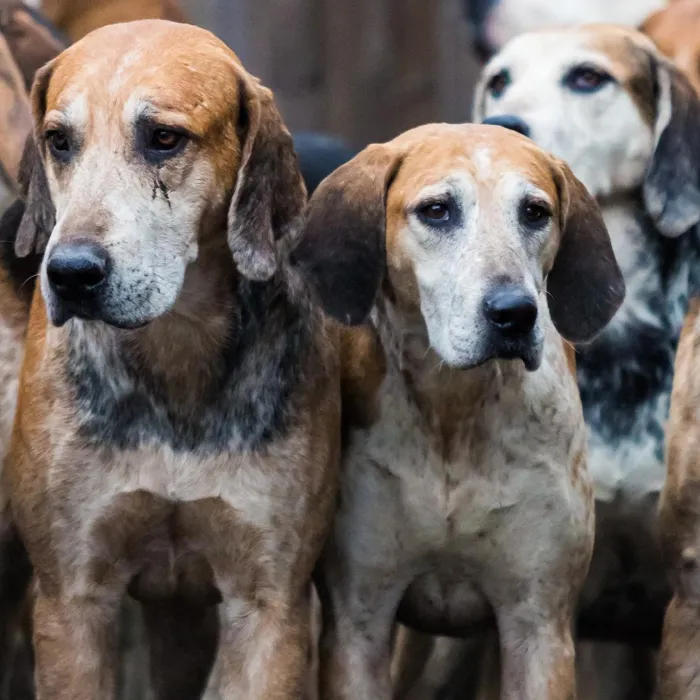English Foxhound

The English Foxhound is a substantial galloping hound of great stamina. His long legs are straight as a gatepost, and just as sturdy. The back is perfectly level. And the chest is very deep, “girthing” as much as 31 inches on a hound measuring 24 inches at the shoulder, ensuring plenty of lung power for a grueling day’s hunt. These pack-oriented, scent-driven hounds are gentle and sociable, but rarely seen as house pets. They can be so driven by a primal instinct for pursuit that not much else, including training, matters to them. Owning these noble creatures is best left to huntsmen who kennel packs of hounds or to those experienced in meeting the special challenges of life with swift, powerful hounds hardwired for the chase.

Ask About English Foxhound ?
Breed Traits
Head
Should be of full size, but by no means heavy. Brow pronounced, but not high or sharp. There should be a good length and breadth, sufficient to give in a dog hound a girth in front of the ears of fully 16 inches. The nose should be long (4½ inches) and wide, with open nostrils.
Ears
Neck
Body
Leg and Feet
Color and Coat
Disqualifications
Group
Hound
Temperament
About
History
Standard
Nutrition
Grooming
Exercise
Training
Health
All pets have found there homes! Sign up to be notified when new pets are added so you don't miss out.


